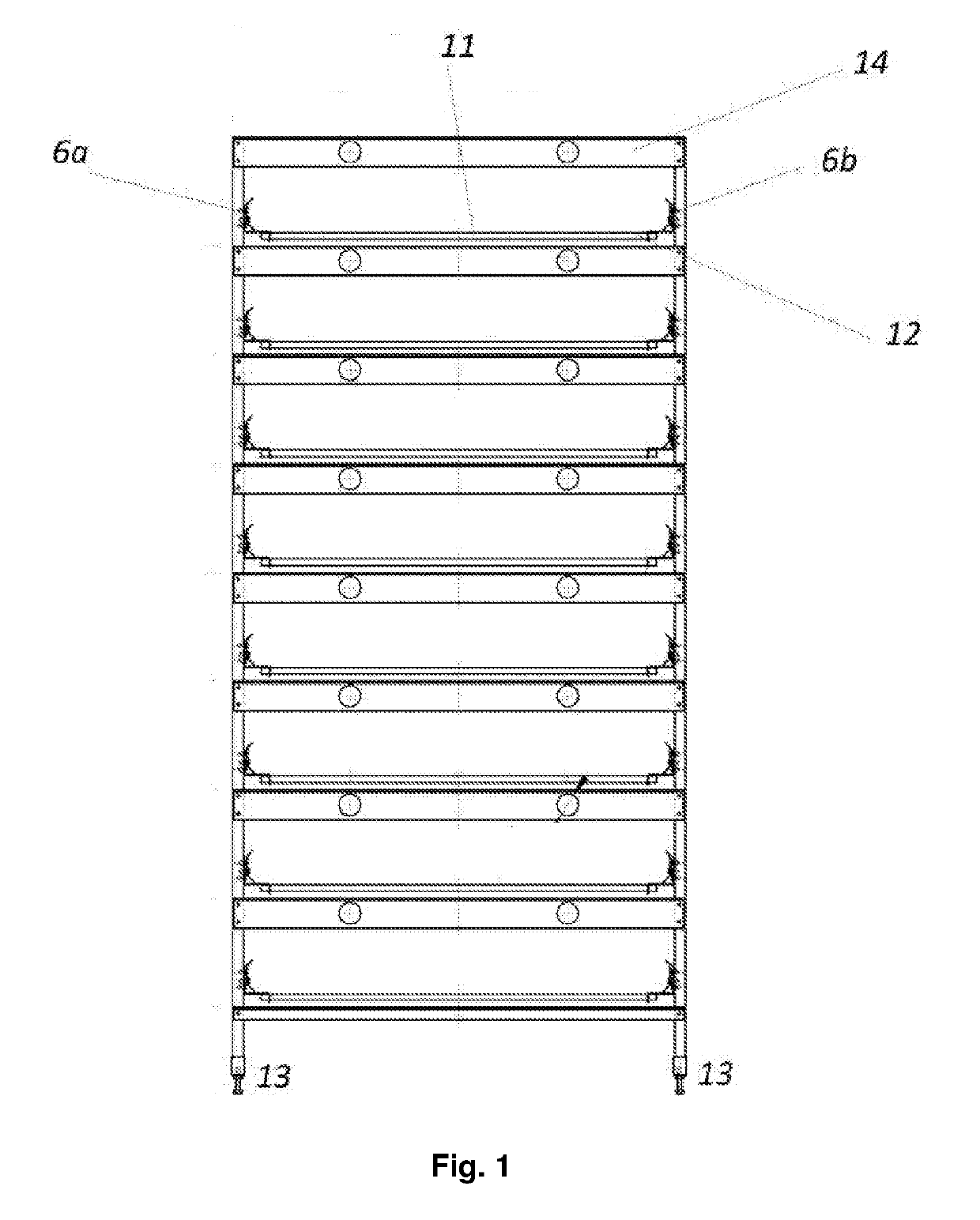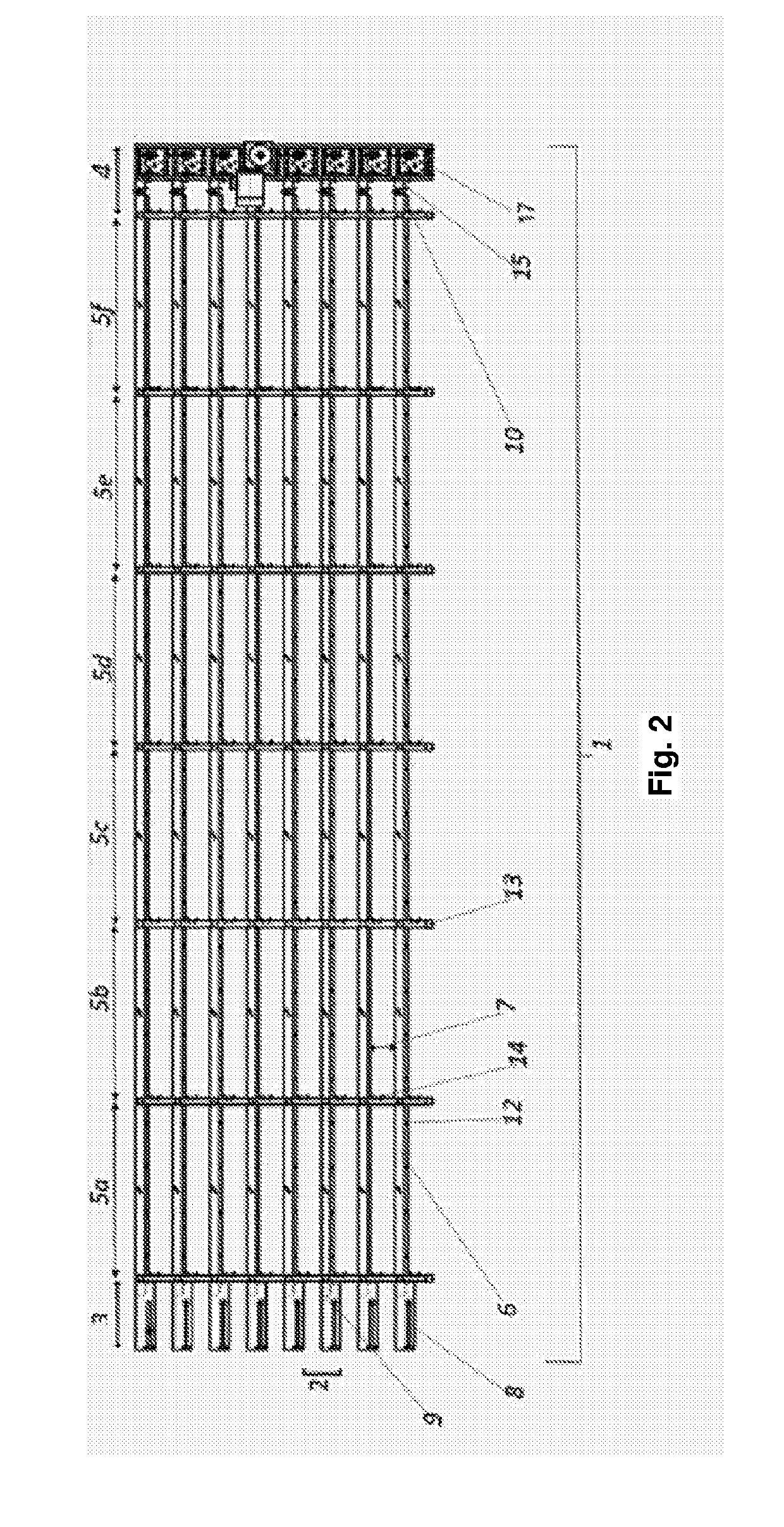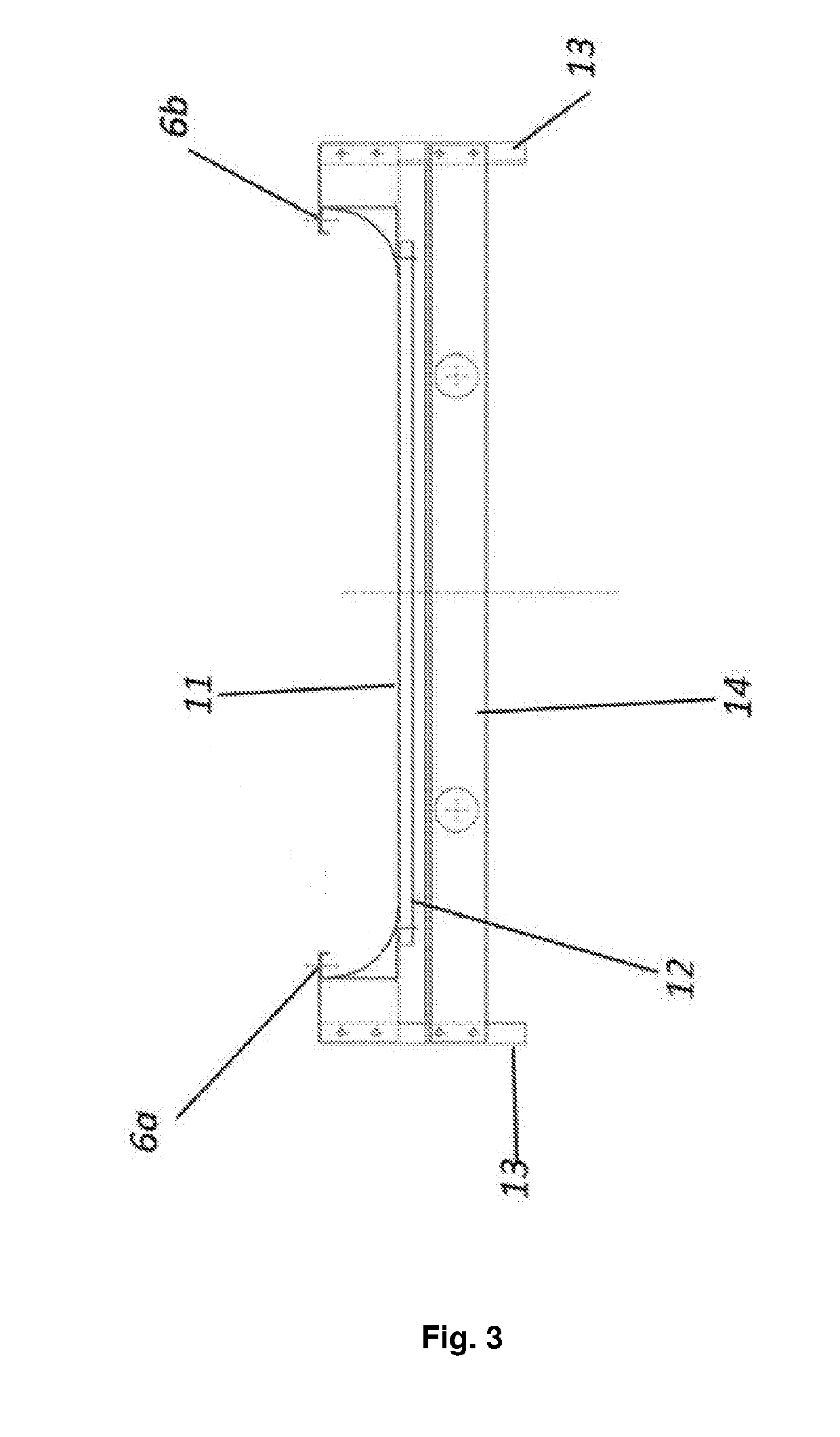Apparatus and method for rearing or breeding of insects
a technology for insects and a method, applied in the field of apparatus and methods for rearing or breeding of insects, can solve the problems of reducing the permissible quantity of insects per unit area, affecting the efficiency of automatic feed distribution, affecting the gaseous exchange and dissipation of moisture and excess metabolic heat, etc., and achieves the effect of reducing the time for rearing/breeding, improving gaseous exchange, and increasing the efficiency of rearing/breeding
- Summary
- Abstract
- Description
- Claims
- Application Information
AI Technical Summary
Benefits of technology
Problems solved by technology
Method used
Image
Examples
example 1
ical Line for Rearing / Breeding Insects
[0048]The technological line 1 for rearing and / or breeding of flightless insects and / or larval forms of insects, as shown at a cross-section in FIG. 1 and at a side view in FIG. 2, as a part of a modular system, includes at least one level 2, the level being an autonomous conveyor belt 11 with profiled lateral sidewalls 6a, 6b having upper edges curved inwards, with the profiled lateral sidewalls 6a, 6b being at the same time structural elements supporting the edges of the belt of the conveyor 11, so that both the conveyor belt 11 together with the upward curved edges of the profiled lateral sidewalls 6a, 6b form a trough profile.
[0049]FIG. 1 and FIG. 2 show the multi-level system of conveyor belts 11 including eight levels 2. Each conveyor belt 11 is 110 m long and 3 m wide, but these values of length and width may vary in other embodiments, preferably within the range between 2-110 m for length and 0.5-3 m for width, with the profiled lateral ...
PUM
 Login to View More
Login to View More Abstract
Description
Claims
Application Information
 Login to View More
Login to View More - R&D
- Intellectual Property
- Life Sciences
- Materials
- Tech Scout
- Unparalleled Data Quality
- Higher Quality Content
- 60% Fewer Hallucinations
Browse by: Latest US Patents, China's latest patents, Technical Efficacy Thesaurus, Application Domain, Technology Topic, Popular Technical Reports.
© 2025 PatSnap. All rights reserved.Legal|Privacy policy|Modern Slavery Act Transparency Statement|Sitemap|About US| Contact US: help@patsnap.com



